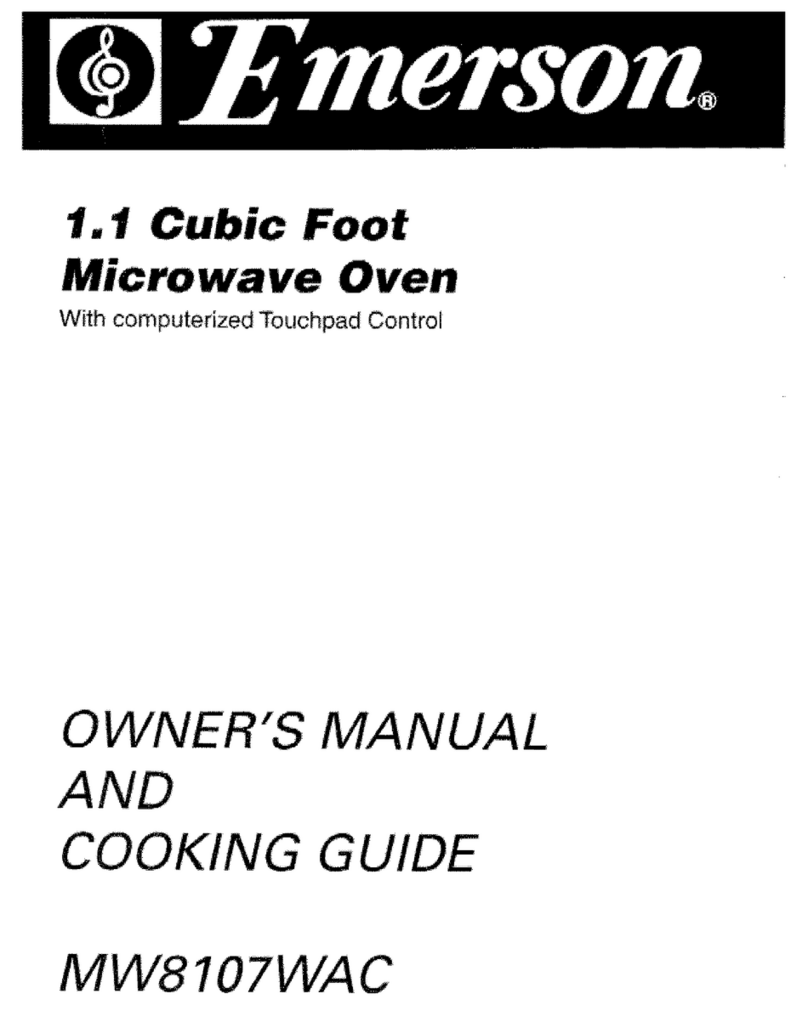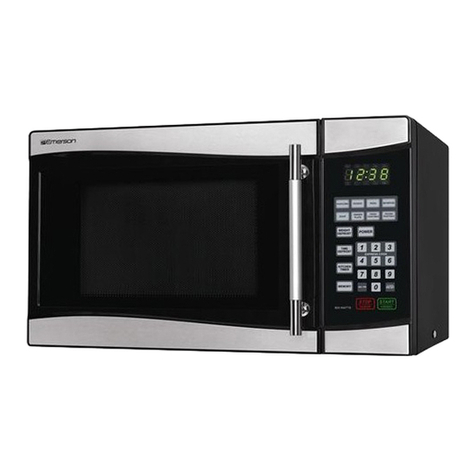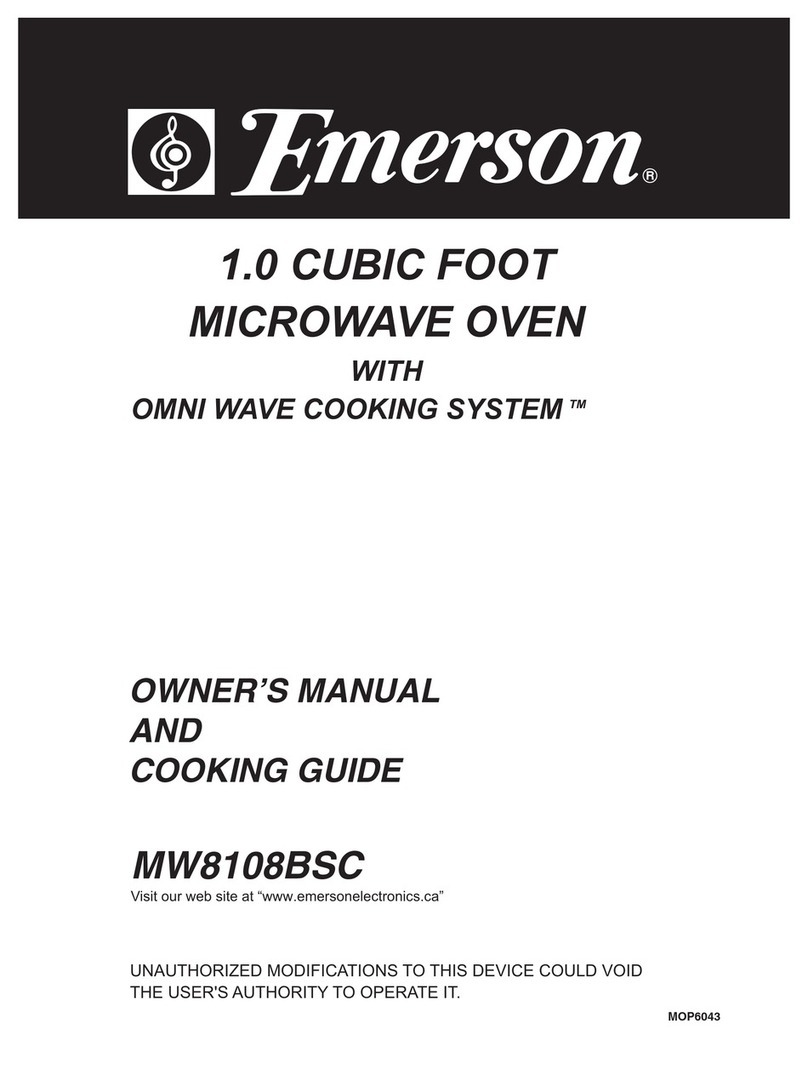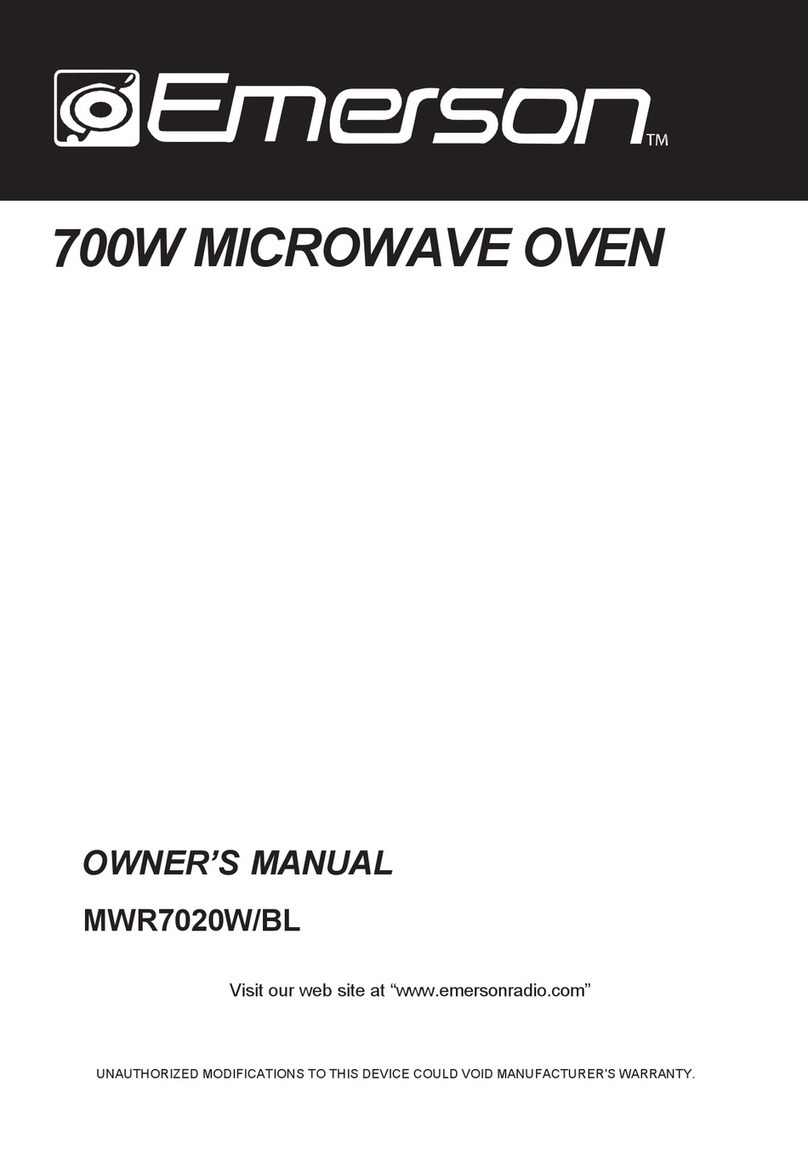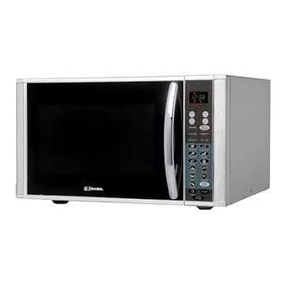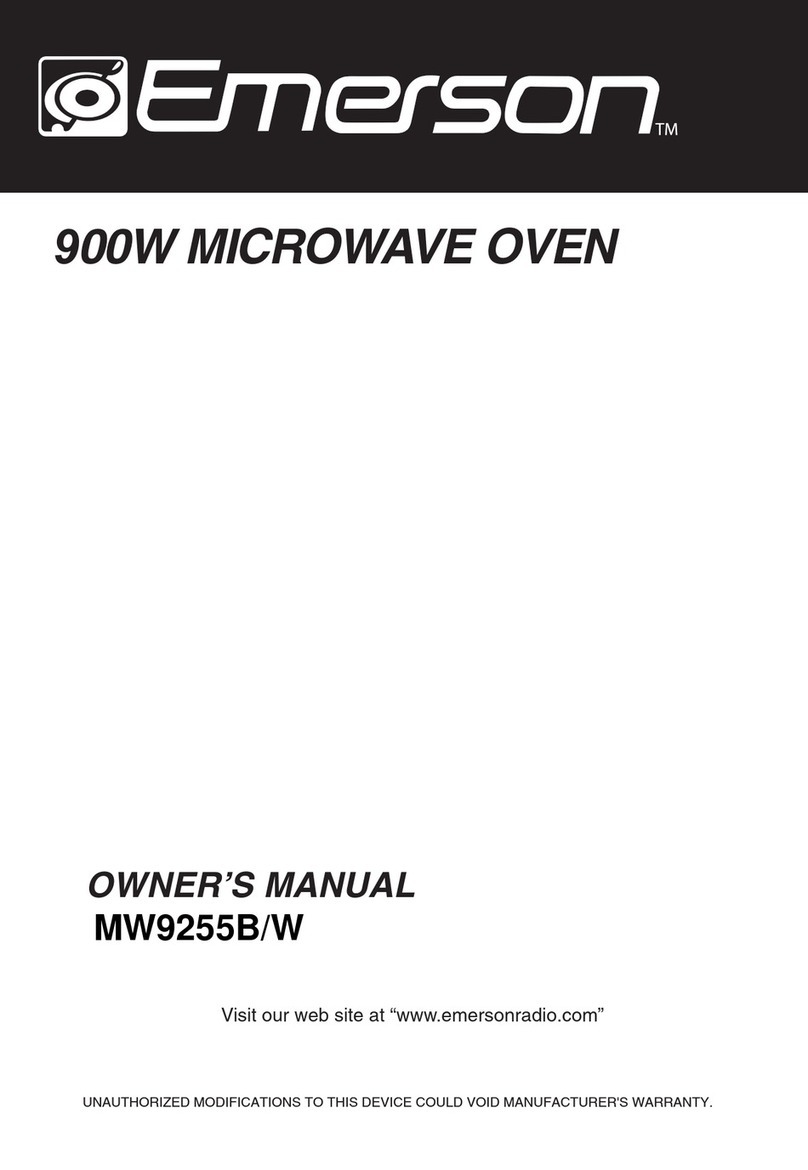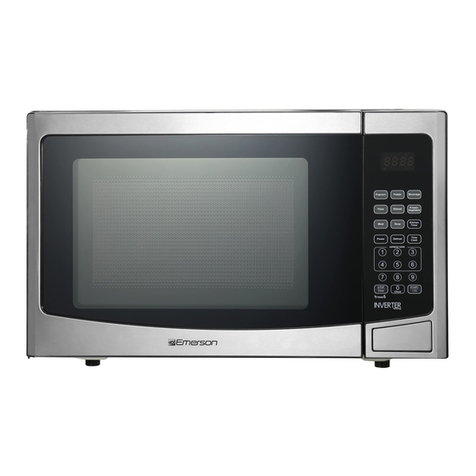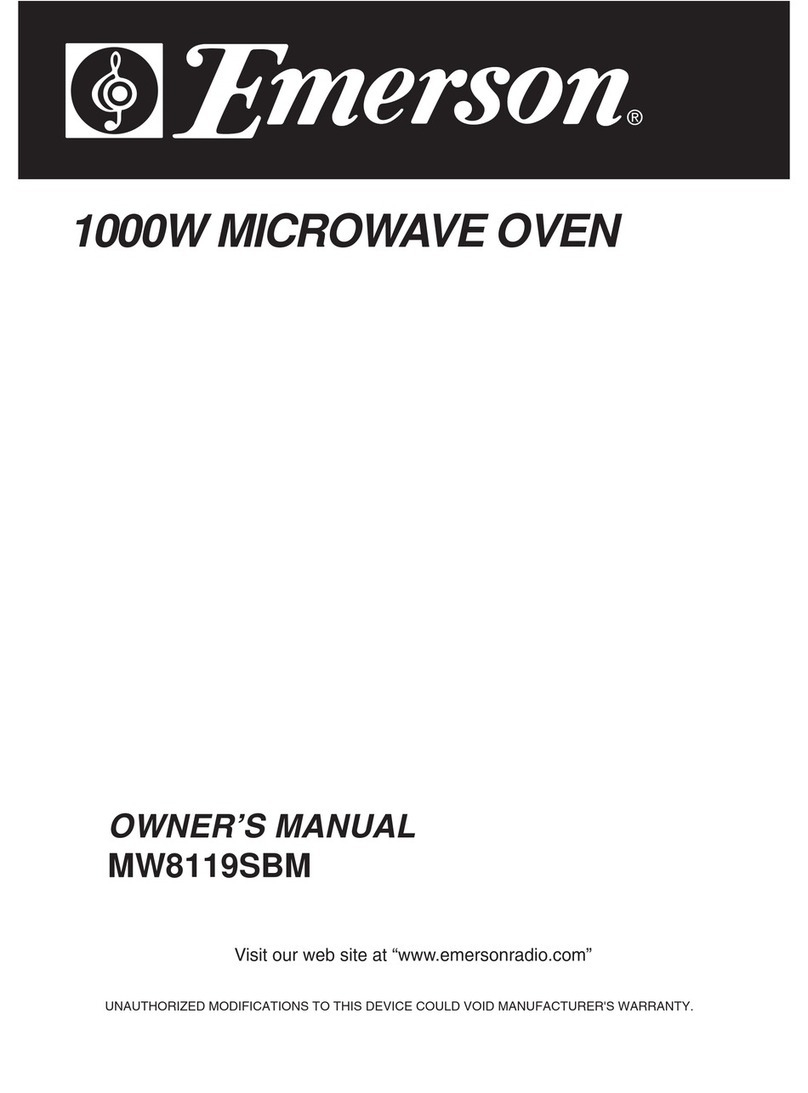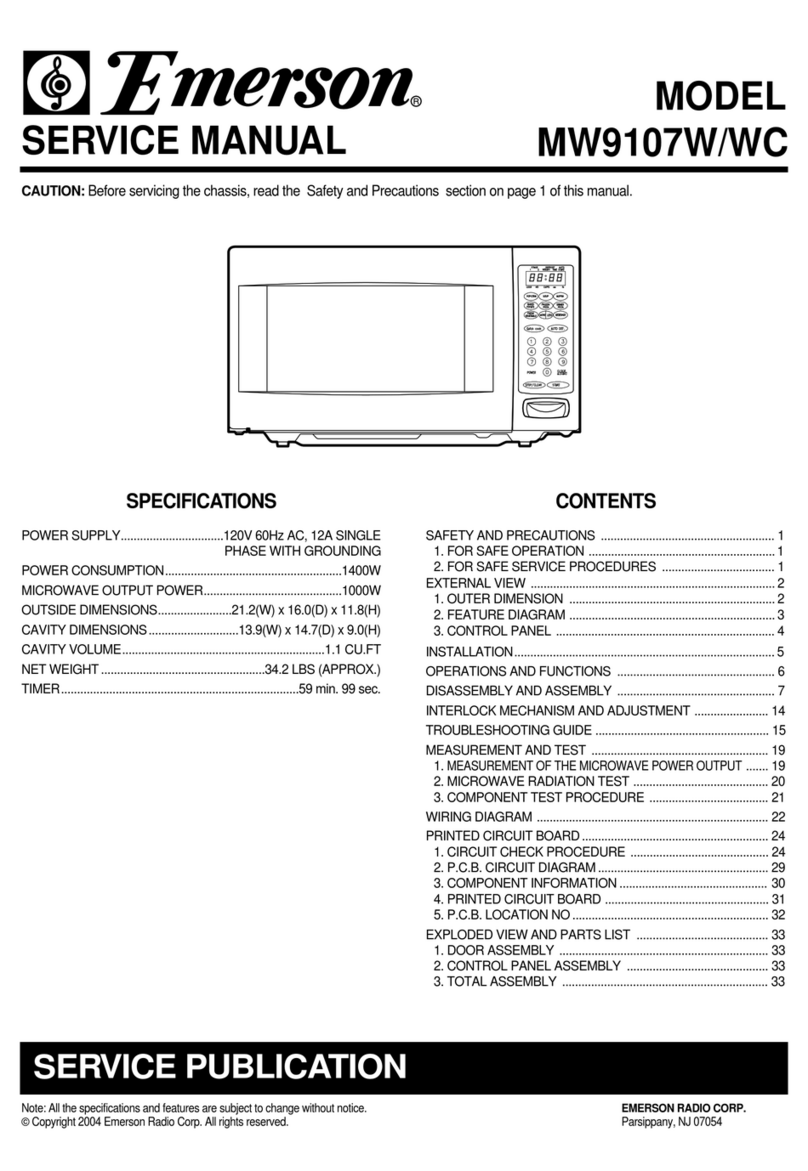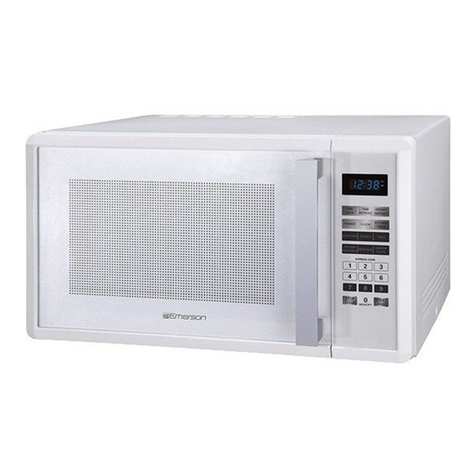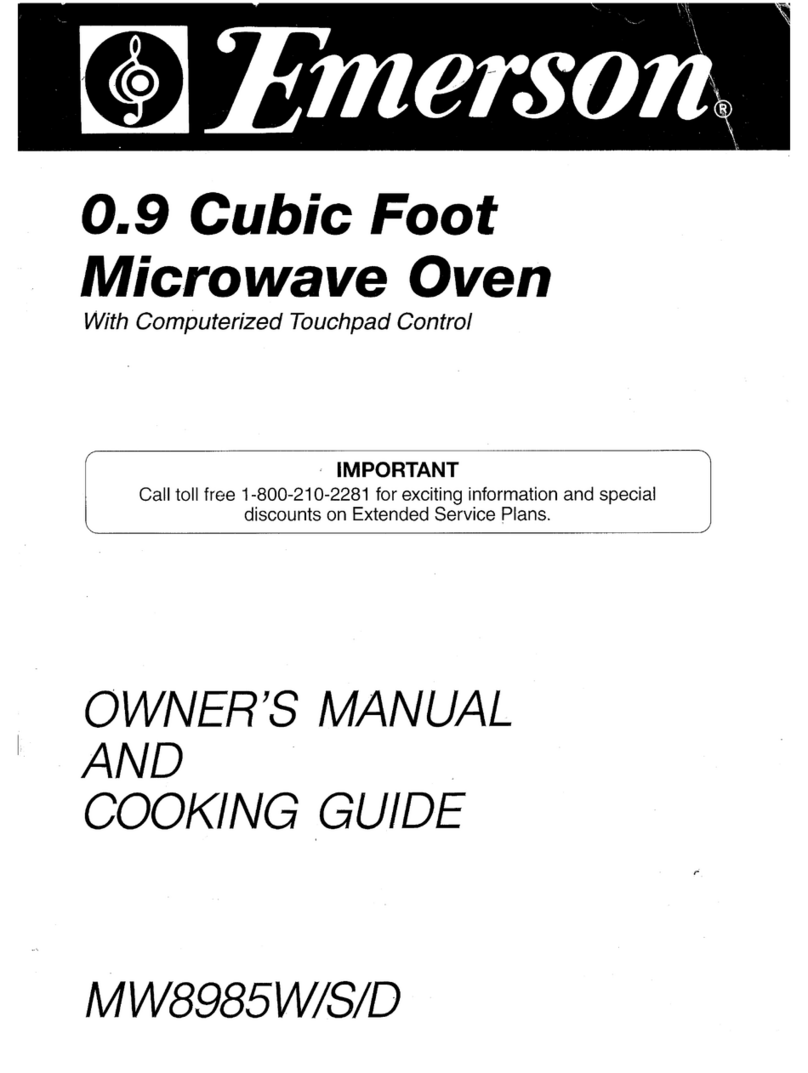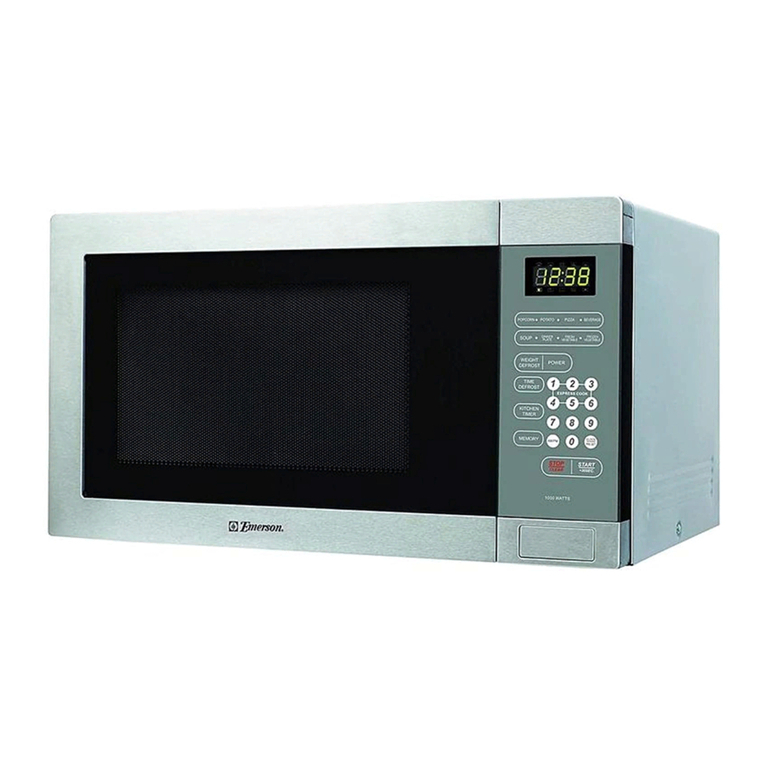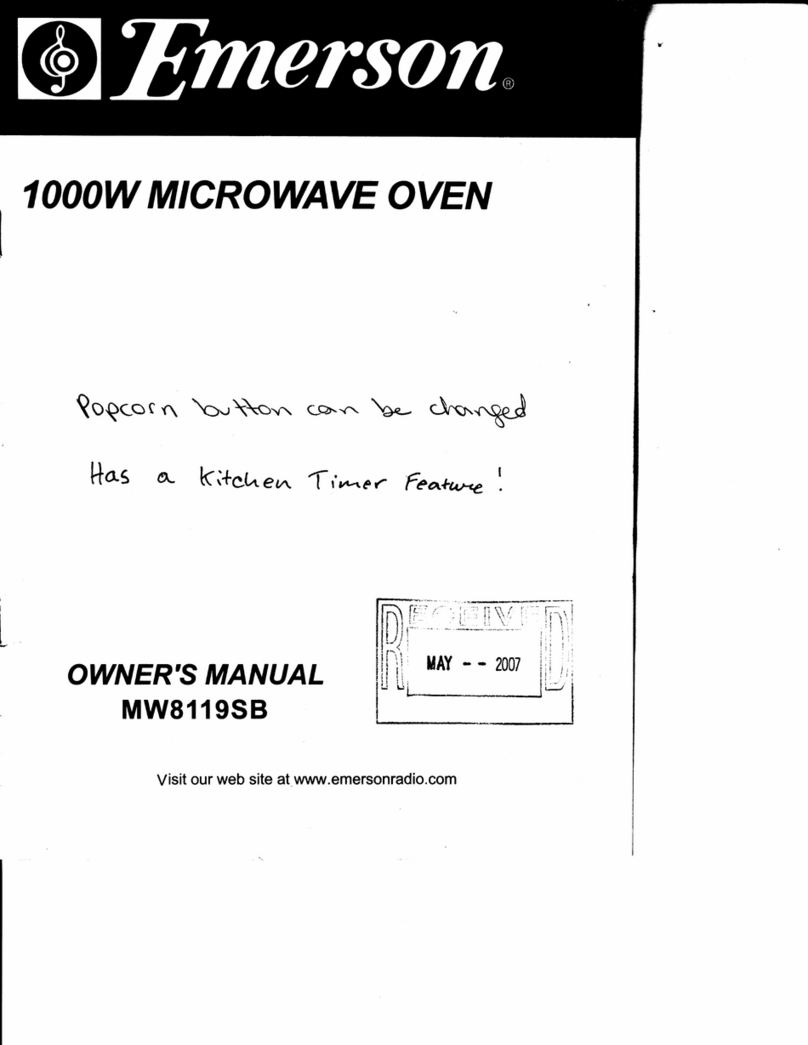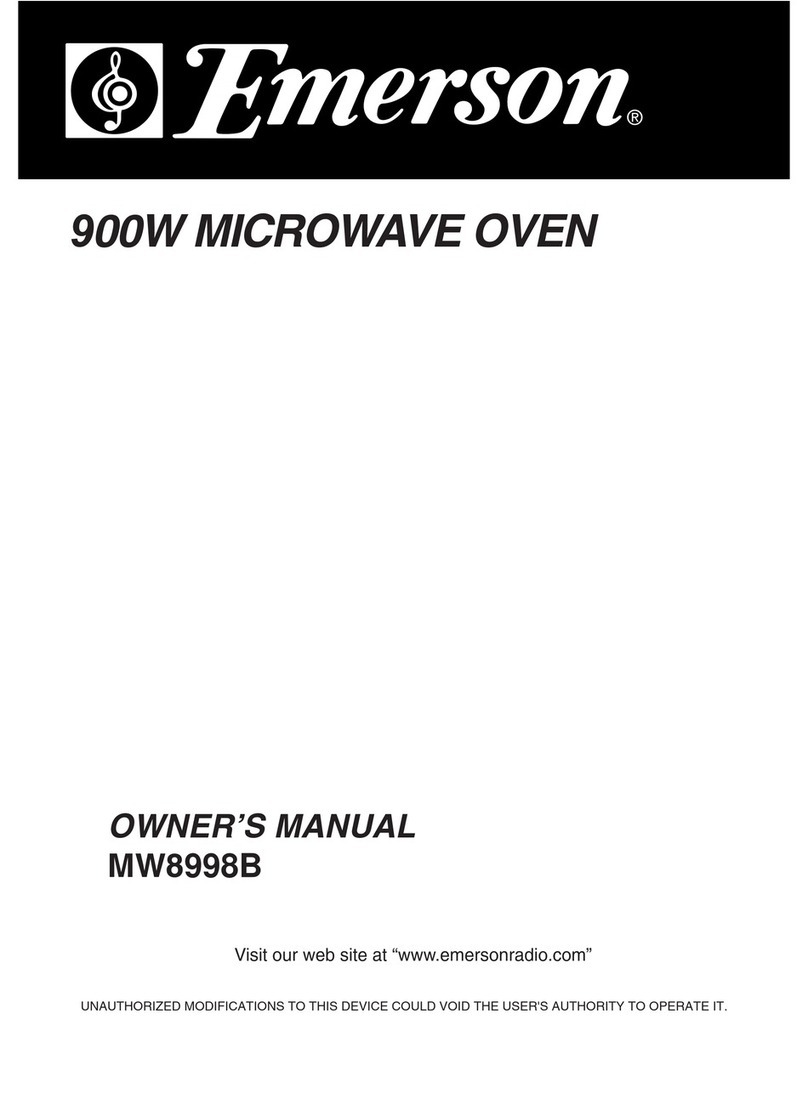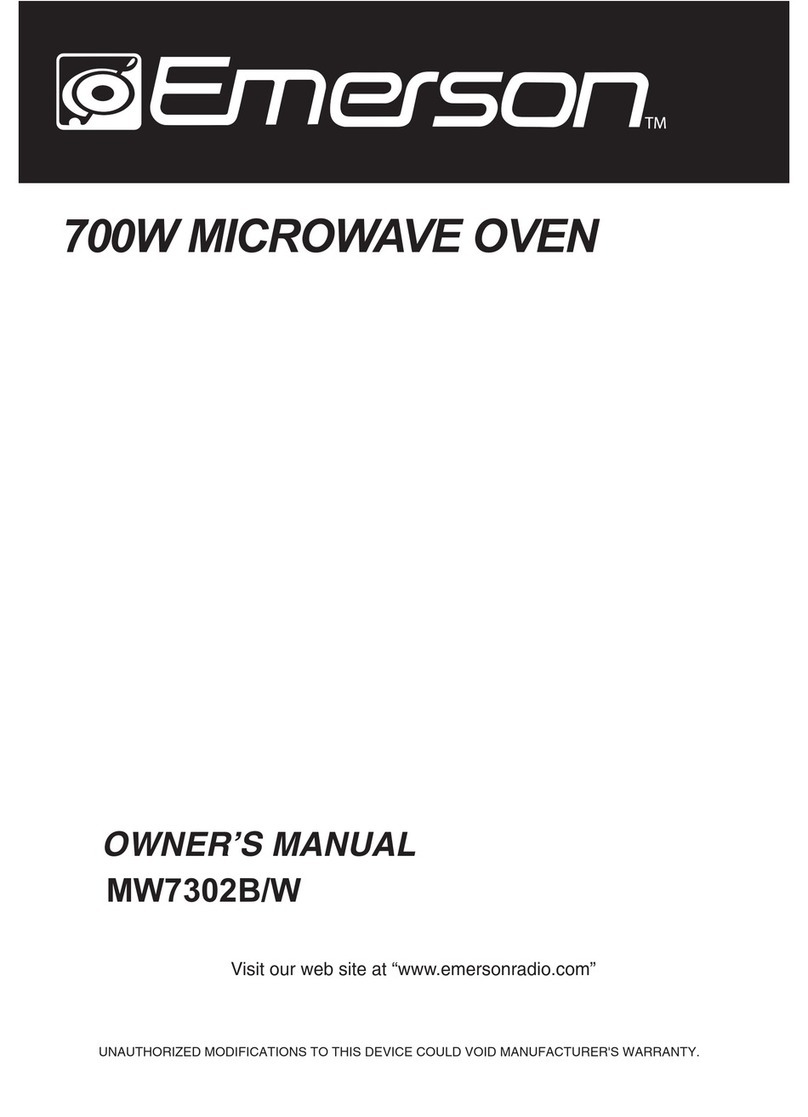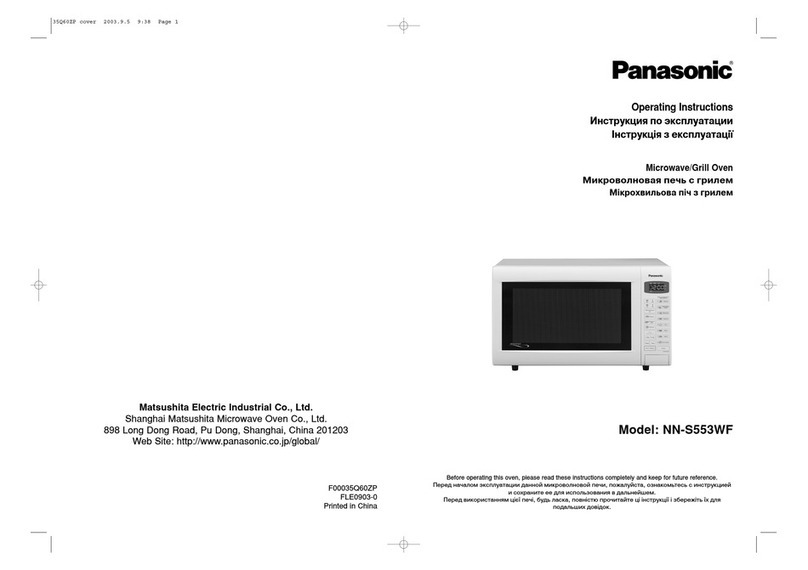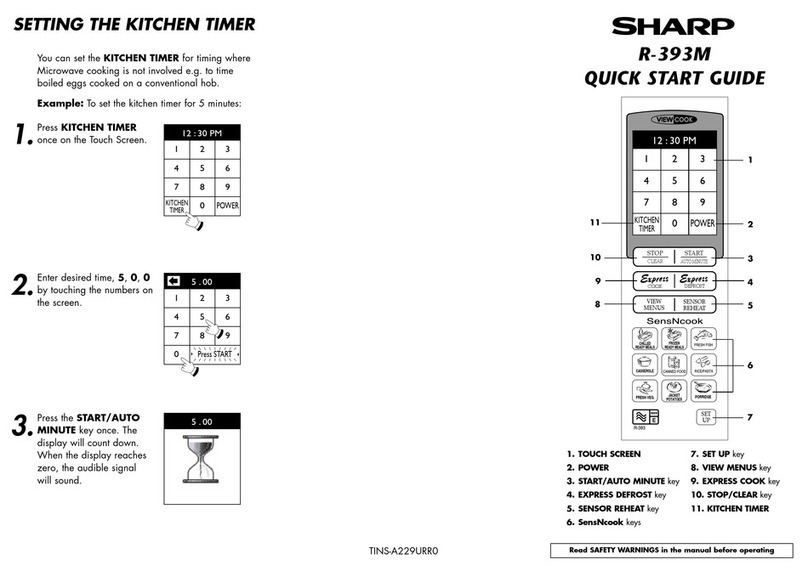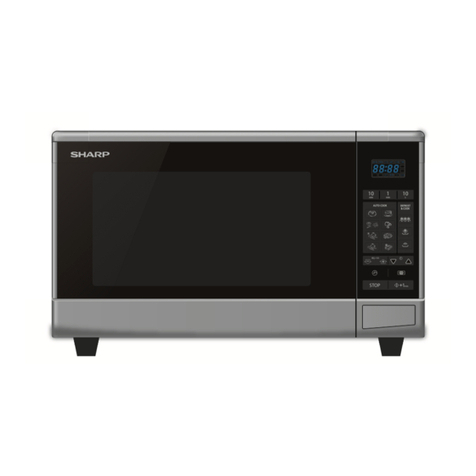
IMPORTANT SAFETY INSTRUCTIONS
SAFETY PRECAUTIONS
General Use
1Do NOT attempt to tamperwith or makeany
adjustments or repairs to door, controlpanel or
any otherpart of the oven. Do NOT remove
outer panel from oven. Repairs should only be
done by qualified service personnel.
2Do NOT operate the ovenempty. The
microwaveenergywillreflectcontinuously
throughout the oven if no food or water is
present to absorb energy.
3Ifafireoccurs in the oven, touch the
Stop/Clearbutton andLEAVE THE DOOR
CLOSED. Disconnect the power cord, or shut
off power at the fuse or circuit breaker panel.
4Do NOT attempt to dryclothes,newspapers or
othermaterials in the oven. Theymaycatch on
fire.
5Do NOT userecycledpaperproducts.
Recycledpaper towels,napkinsandwaxed
papercancontainmetal fleckswhichmay
causearcing or ignite. Paperproducts
containing nylon or nylon filaments should be
avoided, as they may ignite.
6Some styrofoam trays (like those that meat is
packagedon)haveathin strip of metal
embedded on the bottom. When microwaved,
the metal canburn the floor of the oven or
ignite a paper towel.
7Avoidinsertingnails,wire, etc. throughany
holes in the unit during operation. Never insert
a wire, nail or any other metal objects through
the holes on the cavity or any otherholes or
gaps,becausesuchobjects maycause
electric shock and microwave leakage.
Utensils
1METAL CONTAINERS or dishes with metallic
rims should not be used. Arcing may occur.
2METAL TWIST-TIESmaynot be used in the
microwave oven.
3Do NOT useSEALEDJARS or NARROW
NECKbottles for cooking or reheating. They
may shatter.
4Do NOT use CONVENTIONAL THER-
MOMETERS in the microwaveoven. They
may cause arcing.
5Remove PLASTIC STORE WRAPSbefore
cooking or defrosting foods in the oven.
6For FURTHER INFORMATION on proper
cooking utensils,refer to the COOKING
GUIDE on page 17.
Food
1Neveruseyourmicrowaveoven for HOME
CANNING. The oven is not designed to permit
proper canning. Improperly canned food may
spoil and be dangerous to consume.
2COOKING TIMES given in the cooking guide
areapproximate. Factors thatmay affect
cookingare starting temperature,altitude,
volume,sizeandshape of foodand utensils
used. As youbecomefamiliarwiththeoven,
you will be able to adjust for these factors.
3
springs of the safety interlockswitches,
thereby rendering them inoperable.
18
Keep the spatter shield clean at all times.
Wipe the oven interior withasoft damp cloth
after eachuse. If youleavegrease or fat
anywherein thecavityit mayoverheat,smoke
or evencatch firewhennextusing the oven.
Liquids,such as water, coffee, or tea areable
to be overheated beyond the boilingpoint
withoutappearing to be boilingdue to
surface tension of theliquid. Visiblebubbling
or boilingwhencontainer is removed from
the microwaveoven is notalwayspresent.
THIS COULD RESULT IN VERY HOT
LIQUIDS SUDDENLY BOILING OVER
WHEN THE CONTAINER IS DISTURBED
To reducethe risk of injury to
persons:
1. Do not overheat the liquid.
2. Stir the liquidboth beforeandhalfway
through heating it.
3. Do notuse straight-sidedcontainerswith
narrow necks.
4. After heating, allow the container to stand in
the microwave oven forashort time before
removing the container.
5. Use extreme care when inserting a spoon or
other utensil into the container.
19
OR A UTENSIL IS INSERTED INTO THE
LIQUID.
FOR HOUSEHOLD USE ONLY
SAVE THESE INSTRUCTIONS
.

